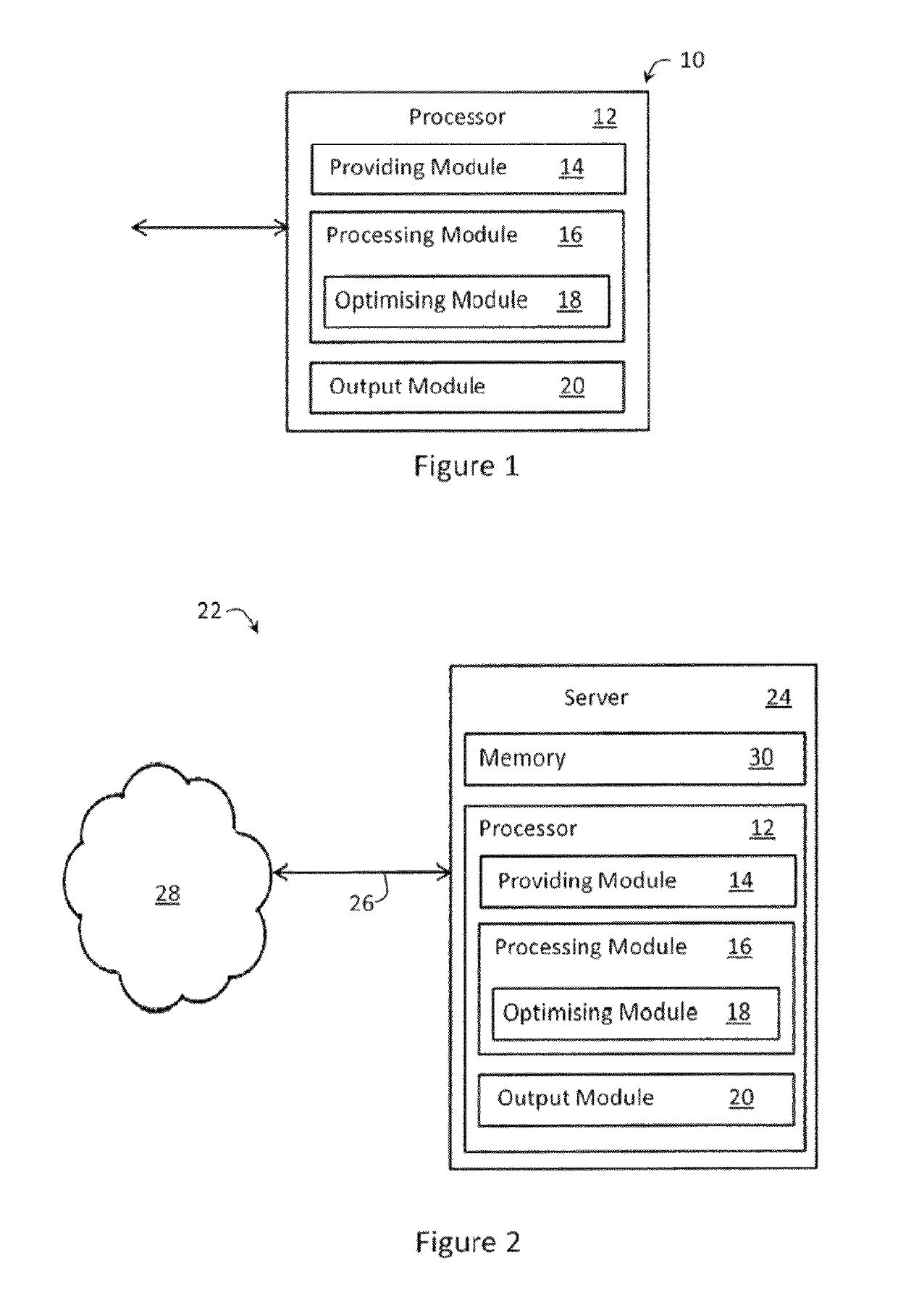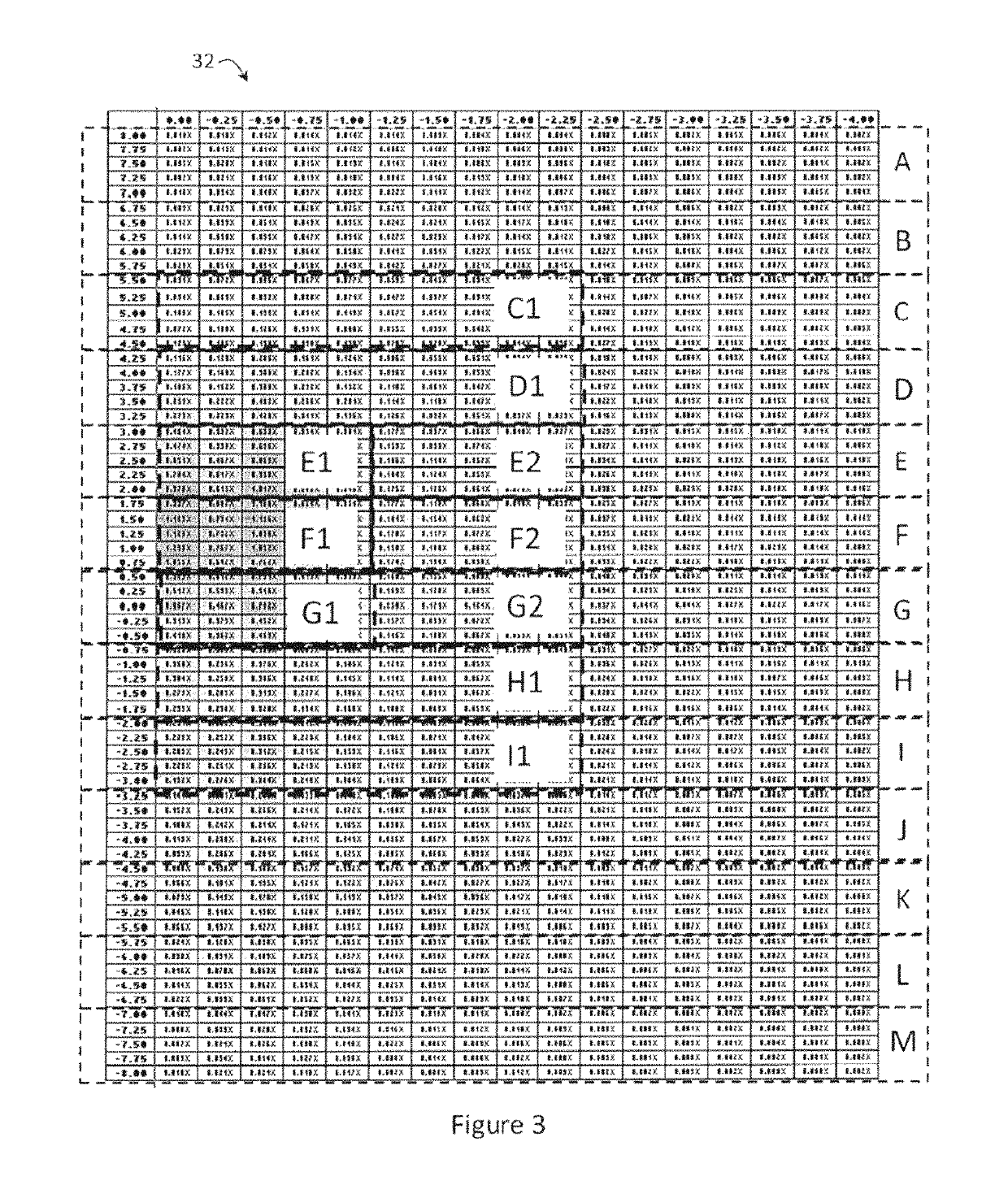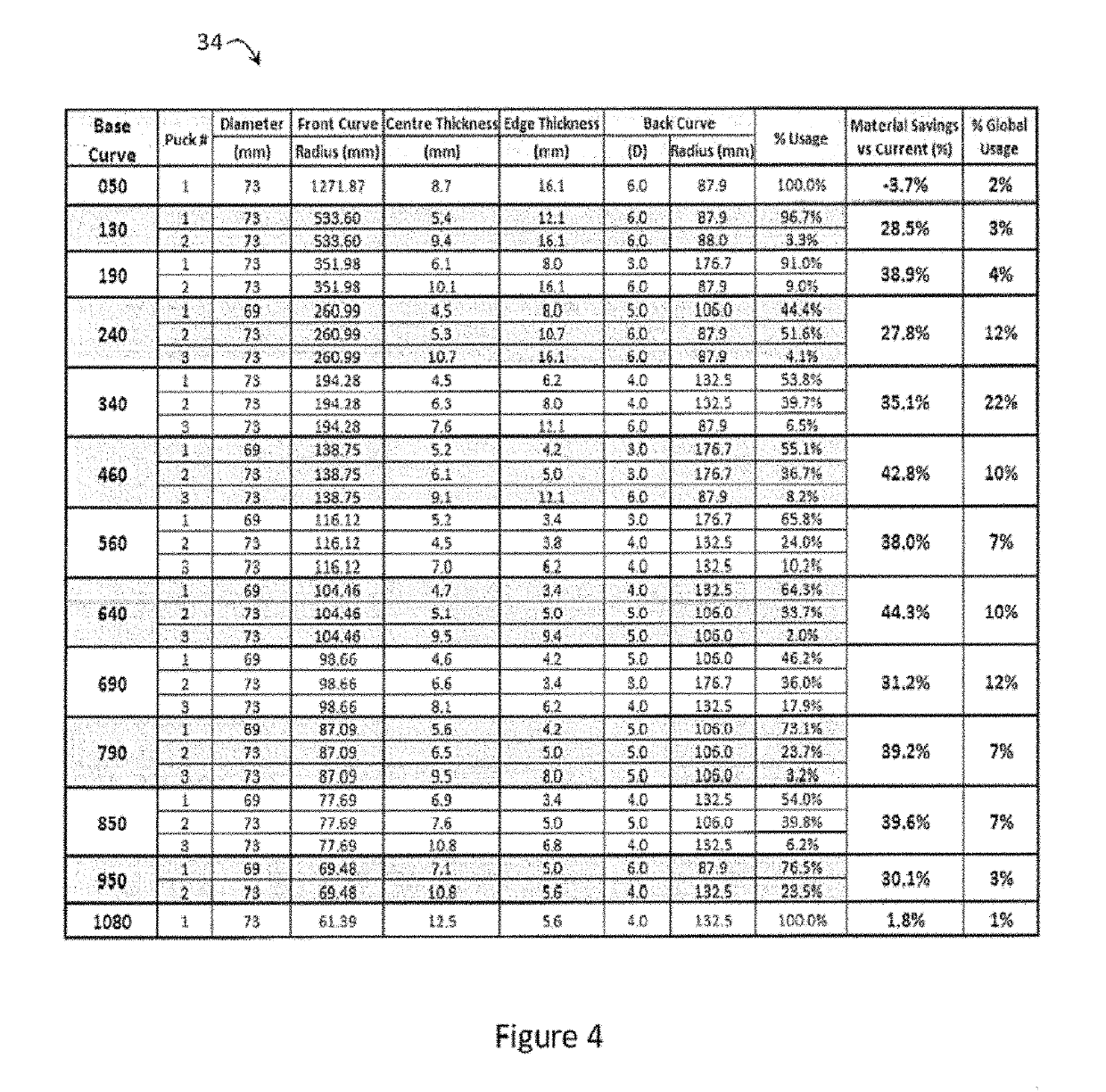Method of optimizing geometry of a semi-finished ophthalmic lens in a set of semi-finished ophthalmic lenses
a technology of ophthalmic lenses and geometry, which is applied in the field of optimizing geometry of semi-finished ophthalmic lenses in a set of semi-finished ophthalmic lenses, can solve the problems of significant lens material wastage, complex surface of a lens, and manufacturing difficulty
- Summary
- Abstract
- Description
- Claims
- Application Information
AI Technical Summary
Benefits of technology
Problems solved by technology
Method used
Image
Examples
Embodiment Construction
[0050]According to an embodiment, there is provided a system 10 for optimising geometry of at least one semi-finished ophthalmic lens in a set of semi-finished ophthalmic lenses having a designated lens material, as shown in FIG. 1. As described, each of the semi-finished ophthalmic lenses in the set has an initially determined geometry including one of a plurality of base curves determined to allow manufacture of finished ophthalmic lenses for substantially all ophthalmic lens prescriptions. It will be appreciated by those persons skilled in the art that the term “substantially all” when used herein with reference to ophthalmic lens prescriptions refers to a designated percentage of ophthalmic lens prescriptions suitable for an entire population having ophthalmic lens prescriptions. For example, “substantially all” ophthalmic lens prescriptions refers to approximately 99.99% of ophthalmic lens prescriptions suitable for the entire population of ophthalmic lens wearers. Thus, finish...
PUM
 Login to View More
Login to View More Abstract
Description
Claims
Application Information
 Login to View More
Login to View More - R&D
- Intellectual Property
- Life Sciences
- Materials
- Tech Scout
- Unparalleled Data Quality
- Higher Quality Content
- 60% Fewer Hallucinations
Browse by: Latest US Patents, China's latest patents, Technical Efficacy Thesaurus, Application Domain, Technology Topic, Popular Technical Reports.
© 2025 PatSnap. All rights reserved.Legal|Privacy policy|Modern Slavery Act Transparency Statement|Sitemap|About US| Contact US: help@patsnap.com



